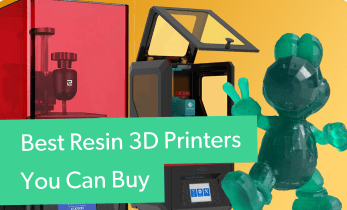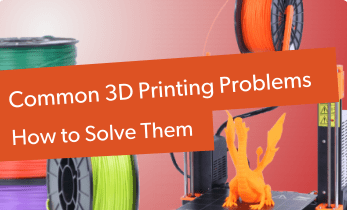Is 3D Printing Safe? New Research on PLA and ABS Materials
As 3D printing continues to grow in popularity, questions regarding its potential health risks are becoming more prevalent. The focus is now shifting to the long-term effects of exposure to 3D printing fumes, particularly the potential for carcinogenicity. A recent study highlighted by Hackaday explores whether commonly used 3D printing materials, such as PLA (Polylactic Acid) and ABS (Acrylonitrile Butadiene Styrene), may pose risks to users in both hobbyist and professional settings.

Watch Ian talk about a new study into carcinogens in 3dprinting materials in this episode of The Electromaker Show
This study is particularly timely, as many 3D printing enthusiasts and professionals have been concerned about the health implications of melting plastics in enclosed spaces without proper ventilation. While previous discussions have focused on resin printing, which is known to emit toxic fumes, this research aimed to provide more concrete evidence on the safety of FDM printing methods. Although the study did not find conclusive evidence of carcinogenic effects, it did raise questions about long-term exposure and highlighted the need for more extensive research in this area.
The study underscores the importance of taking appropriate safety measures when 3D printing, such as ensuring proper ventilation and minimizing direct exposure to fumes, especially in environments where printers are used frequently.
Key Findings from the Study
The recent study sheds light on the potential health risks associated with 3D printing, particularly focusing on the commonly used materials PLA and ABS. While the study did not find definitive evidence that these materials are carcinogenic, it provided valuable insights into the possible risks posed by 3D printing fumes. Tests included DNA damage analysis and gene expression studies to determine whether exposure to fumes from heated PLA and ABS could cause cellular changes.
One key finding was that, while ABS emits more volatile organic compounds (VOCs) compared to PLA, both materials showed an increase in cellular metabolic activity during lab tests. This suggests that prolonged exposure to these fumes may impact cell function, which could be an early indicator of health risks over time. However, the study did not confirm a direct link between 3D printing fumes and carcinogenesis, highlighting the need for further research into long-term exposure to these materials.
Despite the absence of conclusive evidence on carcinogenicity, the study reinforces the importance of practicing good ventilation and minimizing direct exposure to fumes when using 3D printers, particularly in closed environments or when printing with ABS.
Practical Implications and Safety Recommendations for 3D Printing
The findings from this study have important practical implications for anyone involved in 3D printing. Although no conclusive evidence of carcinogenicity was found, the increase in cellular metabolic activity suggests that long-term exposure to fumes from materials like ABS and PLA could pose health risks over time. For hobbyists and professionals alike, this reinforces the need to prioritize safety when using 3D printers.
One of the most important recommendations is to ensure adequate ventilation in areas where 3D printers are used, particularly if you are printing with ABS, which emits more volatile organic compounds (VOCs) than PLA. Using enclosed printers with proper exhaust systems or setting up 3D printing stations in well-ventilated rooms can significantly reduce exposure to potentially harmful fumes. Additionally, wearing protective gear such as masks can further minimize inhalation risks.
For those using resin printers, which are known for requiring stricter safety measures, similar precautions should be taken. Handling resin safely, along with isopropyl alcohol for cleaning, and using the same level of caution for FDM printing processes can ensure a safer working environment.
Ultimately, as 3D printing becomes more common in both home and educational settings, it is essential to stay informed about the potential risks and adopt best practices for safety. While further research is needed to fully understand the long-term effects of 3D printing fumes, users should be proactive in reducing exposure and protecting their health.
Did you enjoy this article?
Make sure you subscribe to The Electromaker Show for similar content and subscribe to our monthly newsletter!














































Leave your feedback...